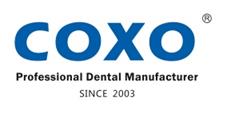Why do we need an Implant UV Activator?
Why dental implant surface matters
At first glance, titanium might seem a strange choice for dental implant material. Though it has high strength, great biocompatibility, a low level of toxicity potential, and high resistance to corrosion, titanium in its pure state is highly reactive. When it interacts with oxygen, however, a surface layer of titanium oxide (TiO2) is formed, stabilizing the surface and allowing osseointegration to occur.
The surface has an important role in healing time for osseointegration and, ultimately, the success of implant treatment. It is the only part of the implant exposed to the surrounding oral environs, and its chemical, physical, mechanical, and topographic surface characteristics are all crucial to maximizing the likelihood of successful osseointegration.
Developments in implant surface modification
Today, there is a wide range of titanium dental implant surfaces. P-I Brånemark’s initial implants over 50 years ago had a smooth, turned surface, and as he described, they require three to six months of healing before successful implant loading can take place.
Now there are three distinct groups of methods through which implant surfaces can be modified at manufacture.
– Mechanical treatments: These include grinding, blasting, and machining to create rougher or smoother surfaces.
– Chemical treatments: Conducted with acids, alkali, sol-gel, or through anodization, among other methods, chemical treatments alter the implant surface’s roughness and composition and enhance surface energy.
– Physical treatments: These treatments include plasma spraying and ion deposition.
Nevertheless, it is not sufficient and, despite their high long-term predictability, several external factors limit the osseointegration of Ti-based implants, which may cause implant failure, such as the presence of poor bone quality and quantity, bone defects, systematic diseases, or bacterial infections. the inevitable presence of carbon-based organic impurities on Ti surfaces is increasingly being regarded as one of the major factors causing biological degradation, often referred to as the aging of titanium.
It is well known that ultraviolet light, particularly in the C-range (UVC), successfully eliminates carbon-based contaminants from Ti surfaces. Such organic compounds are then broken down, either directly by the photogenerated holes or indirectly by hydroxyl radicals resulting from water decomposition.
It significantly reactivates the surfaces and improves osseointegration by promoting faster osteoblast attachment, proliferation, and differentiation.
How Hydrophilic Implants Improve Osseointegration
- In the process of osseointegration, two factors play an important role: the initial stability of the implant in the bone (mechanical stability) and the secondary stability (biological stability after bone reconstruction).
- Implant Activation Hydrophilic Apparatus reduces the risk of treatment failure during critical stability troughs by accelerating and optimizing the integration of implants and osseointegration. Early onset of osseointegration greatly improves implant stability during the “trough of stability” phase.
- The vast majority of implant failures occurred during the trough period of stability 2 to 4 weeks after implant placement. The Implant Activation Hydrophilic Instrument adopts the principle of ultraviolet photocatalysis, and the product design is environmentally friendly. It is built by a professional team and fully complies with the medical operation process of dental implants. Designed for greater safety and already demonstrated reliable treatment predictability early in treatment, giving you greater confidence in treatment outcomes.
Theoretical Basis for Implant Superhydrophilicity
- Surface charge changes of titanium implants The surface of titanium implants is positively charged after activation. The protein and cell surface in the body fluid environment are negatively charged, and the electrostatic interaction occurs on the positively charged titanium surface, which promotes the early implant surface protein and cell adhesion.
- Substantial increase in hydrophilicity and surface energy The photocatalytic reaction produces active groups such as photogenerated electrons, photogenerated holes, and hydroxyl groups with strong oxidation reaction capabilities. These groups can decompose and remove impurities such as hydrocarbons on the surface of the material, greatly increasing its hydrophilicity and surface energy.
- Improve early antibacterial properties
The photocatalytic reaction can enhance the early antibacterial activity.
Advantages of Implant Activation Hydrophilic Instrument
- Shorten the planting time to 1 month The 3-month conventional implant restoration time is shortened to 1 month, realizing rapid implant restoration.
- Improve osseointegration rate The osseointegration rate of non-hydrophilic implants is low, and the osseointegration rate of hydrophilic implants is close to 100%, which provides a solid foundation for the long-term stability of dental implants.
- Expanded indications for planting The success rate of implantation in traditionally high-risk cases such as periodontal disease, immediate implantation, immediate restoration, and diabetes has been improved, and the scope of implantation indications has been further expanded.
References
- Surface Activation of Titanium Dental Implants by Using UVC-LED Irradiation. Nagore Arroyo-Lamas, Iciar Arteagoitia, and Unai Ugalde. 2021 Mar.
- Titanium as a reconstruction and implant material in dentistry: advantages and pitfalls. Özcan M and Hämmerle C. 2012 sep
- A brief historical perspective on dental implants, their surface coatings and treatments. Abraham CM. 2014
